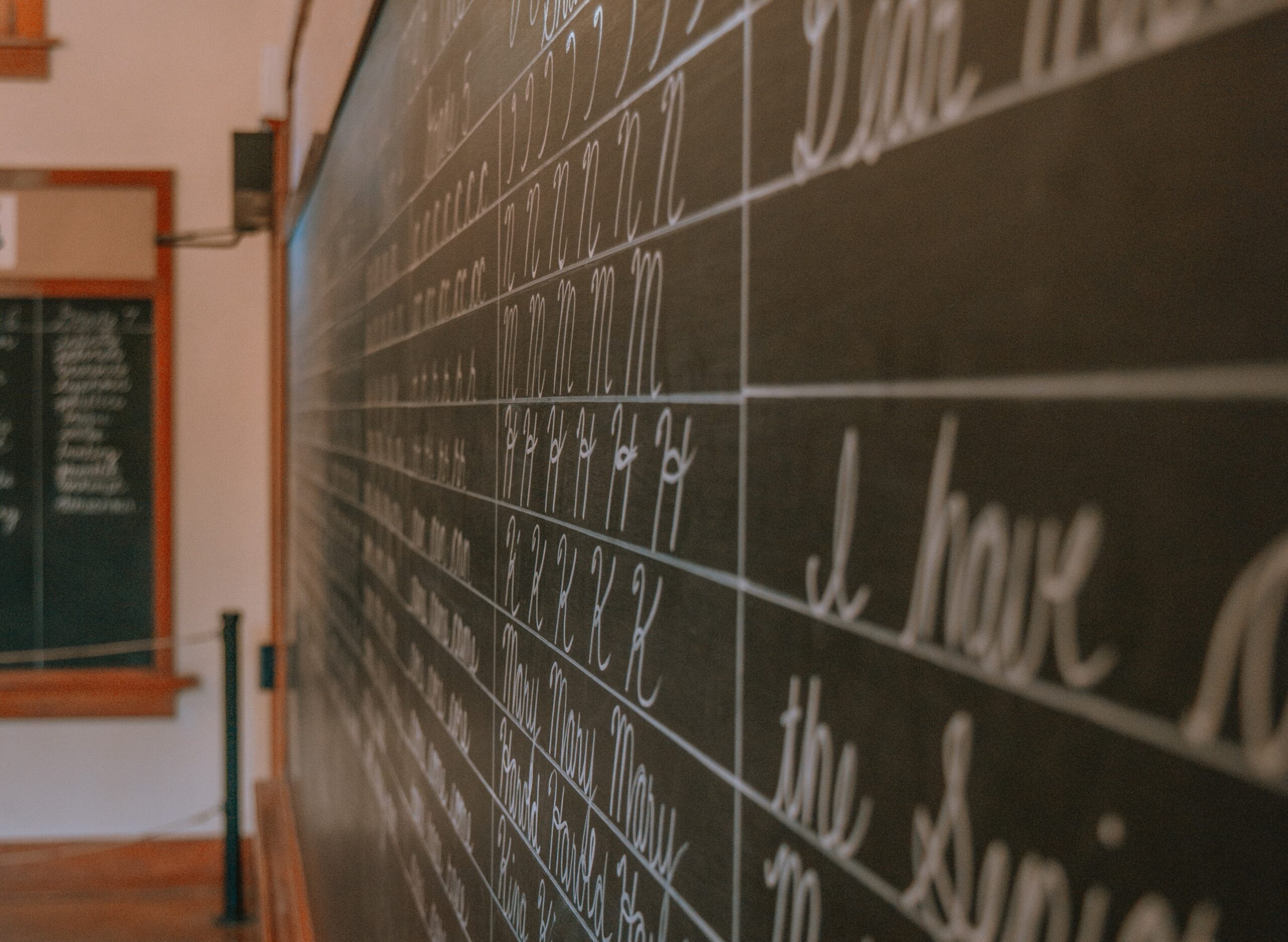
Photo by Albert Stoynov
When I was 17, which is a little bit younger than I am today, I began my first three week posting at a primary school as part of my first year of teacher’s training.
Sadly, I don’t remember the name of the teacher who stood in front of the class that day. Sadly because, no doubt, like all teachers, she touched the hearts of many in her career. And she deserves to be remembered.
Teachers and leaders do this daily.
Let’s call her Mrs Batchelor.
As a 17 year old I watched her carefully write up on the blackboard, in white chalk, the day’s handwriting lesson. The very next day would be my turn. A simple handwriting lesson.
I was petrified. It seems so simple now. All these years later, and a million handwriting lessons and other lessons; and staff meetings; assemblies; sports events: end of year prize giving speeches later….etc, etc. and I wonder now what I was scared of. But I was.
My heart raced as I walked to the front of the class and scraped the chalk across the blackboard surface. I must have written the line of the day’s letter (it was a “d”….. a cursive d) a hundred times…..rubbing them out, just to get them like Mrs Batchelor’s.
I followed the model of her lesson to a tee. And she was happy with that. I think she even wrote in my Teacher’s Planner book, in a completely acceptable 1980s manner, the four letter word….. GOOD.
This is probably the first example of authenticity, or in my case, lack of authenticity, that I encountered in my career. She wasn’t being inauthentic. I was.
I say this because, although I followed her model successfully, there was nothing in this simple lesson that gave an indication to my students of who I was. And because of that I failed in this opportunity to connect.
If I could go back and talk to myself, the advice I’d now give is this:
The model is important, true. But you need to bring something of yourself to that model, in order for you to not only connect with people, but also be fulfilled in yourself. You need to be authentic.
So what does this really mean? Well, that’s a very good question, because it doesn’t appear to have been a big consideration in the majority of my teaching and principal career. We weren’t trained in authenticity. It certainly was never promoted as that crucial key that I now know is so important.
Authenticity to me means this:
- Having a great respect for who you are as a person. This means knowing and understanding what your key values and personality traits are.
- Having confidence in knowing your own strengths AND weaknesses and understanding that both of these are a part of you …. yes you! So don’t hide from these, feel embarrassed about these, or make excuses for these. Embrace them. Wear them on your sleeves!
- Finally; Knowing that authenticity also promotes diversity. There will always be some sort of model to follow, but the real strength in our schools and workplaces isn’t found in a model, but in the diverse personalities that grace our places.
How do you show your team that you are an authentic leader?
You do it by promoting who YOU are, warts and all. And that means becoming very good at knowing who you are and being able to communicate what this means to your organisation.
Yes, this means that you are opening yourself up to a lot of judgement. Being authentic is a potentially vulnerable place to be. But if you have built a culture of authenticity then you will have also built a culture of acceptance and safety.
You lead by taking that big step into the unknown of how people will perceive and receive you. You have a choice. You can do this by wearing a mask and therefore hiding your own unique personality. Or, you can do this by being your biggest asset – YOU.
So if I was 17 again, and I was taking that simple handwriting lesson all over again, I’d be hoping that the model and the plan, somewhere, was also saying “find a way” in this lesson to be yourself and do that.
Steve